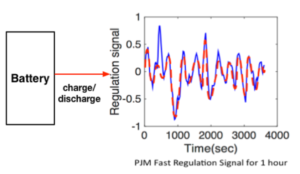Governmental agencies and technology companies use data centers — large facilities that house arrays of powerful computers — to store and process what is becoming one of the world’s most valuable commodities. A company such as Microsoft maintains dozens of data centers around the world, investing over $15 billion to provide cloud computing to 140 countries. Although technological advances are made possible by high-performance and cloud computing, the costs of operating these data centers are skyrocketing.
According to the United States Chamber of Commerce, a typical data center spends 40% of its annual operating budget to power its systems, averaging $7.4 million. Worldwide, data centers consume about 3% of all electricity; in the United States, data centers consume about 2% of the country’s electricity.
How can we reduce the electricity costs of data centers?
Historically, data centers consumed much more energy than strictly required to power their computing and storage resources. Researchers worked to improve cooling and energy distribution systems to reduce wasted energy, and modern data centers have achieved power usage efficiencies (PUEs) — the ratio of total power required to run an entire facility versus the direct power involved in compute and storage — approaching 1.1, meaning only 10% of the total consumed energy does not power computers.

Battery storage and peak-shaving
Batteries in data centers have large power capacities and are primarily used as back-up mechanisms, in order to temporarily handle power outages until diesel generators are brought online. Typically, a data center battery system will have the same power capacity as the data-center peak power, and can supply energy for a few minutes. However, though data centers spend significant capital on provisioning powerful energy storage devices, they aren’t utilized very often — each year, a majority of data centers experience between 0-2 power outages, with a majority of power outages 0-5 minutes in duration.
While maintaining auxiliary power through outages is of utmost importance to a data center, their powerful energy storage resources lie dormant for a vast majority of the time. At the University of Washington, power engineers are exploring a technique known as peak shaving, which would enable data center operators to participate in electricity markets using their energy storage resources.
What’s the benefit of smoothing the demand? For large businesses, electricity bills are split into two parts: total energy cost and peak demand charges. By moving energy across time, data center managers can reduce the peak demand charge, thus bringing down the total utility bill.

Regulation Services
In addition to peak-shaving, data center batteries can be used in the regulation market, earning extra revenue by moving energy across time. Regulation service provides ancillary service to help the electric grid balance demand and supply.
Data center managers could charge and discharge a battery according to the regulation signal. For a fast regulation market, the regulation signal is zero-mean, which suggests net-energy-injection is zero and the batteries just help with moving energy across time. Participants will be paid based on their regulation capacity and performance (in terms of total mismatch).

Joint Optimization
Can energy storage resources at data centers be used in both peak-shaving and regulation service markets? Using half-year data from a Microsoft data center and the PJM regulation market, CEI Graduate Fellow Yuanyuan Shi simulated over 4400 hours of energy storage, peak-shaving, and regulation services, and found that participating in both markets resulted in projected savings of 20%, as compared to projected savings of about 9.5%. For a typical data center, participating in electricity markets could cut costs by over $1 million per year.



